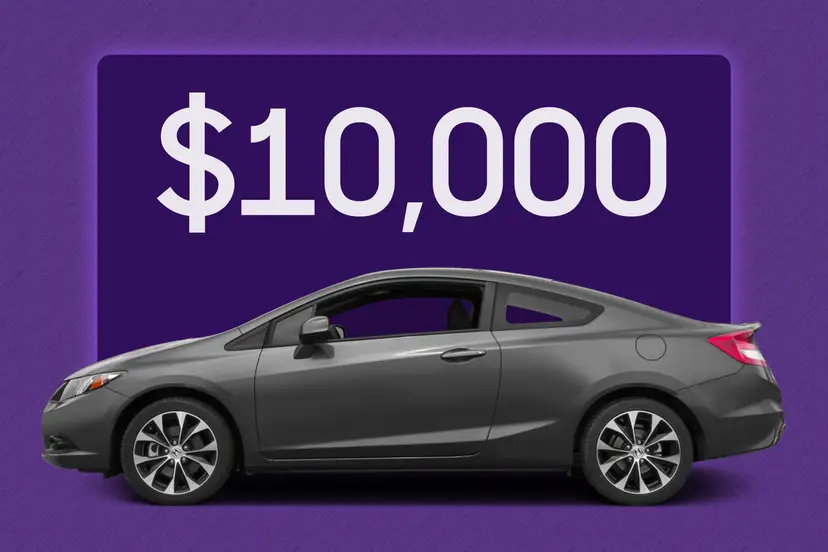
The redesigned 2014 Buick LaCrosse is comfortable, spacious, quiet and well-crafted, but it’s saddled with a few annoying traits.
The LaCrosse is the largest sedan in Buick’s lineup and is related to GM’s other full-size cars: the Chevrolet Impala and Cadillac XTS. Changes to the LaCrosse for 2014 include updated exterior and interior styling, and new technology. To see the 2014 LaCrosse’s specs compared with the 2013 version, click here.
The redesign doesn’t change the cars that the Buick LaCrosse competes against, which include the Lexus ES 350, Toyota Avalon and Chrysler 300. To see how these cars’ specs compare with the LaCrosse’s, click here.
The 2014 Buick LaCrosse starts at $34,460 including a $925 destination charge. It comes standard with a mild-hybrid four-cylinder drivetrain; a V-6 engine is a no-charge option. Front-wheel drive (FWD) is standard, and all-wheel drive (AWD) is optional for V-6 models. The car comes in base, Leather, Premium I and Premium II trim levels. We tested a well-equipped front-wheel-drive (FWD) Buick LaCrosse Premium I with the 304-horsepower V-6. The as-tested price was $45,595.
How It Drives
The Buick LaCrosse’s blend of ride comfort and tightly controlled body motions is great. It doesn’t have the unwavering, planted feel that the Chrysler 300 exhibits, but you’re always firmly in control. The available adaptive suspension lets you feel bumps and other irregularities in the road, but the responses are very refined and appropriately luxurious.
This suspension offers Normal and Sport modes. The ride is firm but comfortable in Normal. The car rides a little harder and is less forgiving in Sport, but the differences are slight overall. Our test car wore 19-inch wheels, which is the smallest size offered with the adaptive suspension. If anything, larger wheels are likely to firm up the ride even more.
Steering tuning is another highlight. The wheel turns with impressive smoothness, a light feel and welcome steering feedback. It’s well done.
The available 3.6-liter V-6 moves the nearly two-ton LaCrosse well enough. There’s adequate reserve power for passing at highway speeds, but don’t expect it to shove you back in your seat; the engine gets the job done without feeling underpowered, but nothing more. The V-6 is, however, incredibly silent; you barely hear it, even under full-throttle acceleration.
The V-6 works with a six-speed automatic transmission. One editor thought the automatic upshifted too soon and didn’t kick down quickly enough, but it never seemed like it was in the wrong gear during my testing. Like the V-6 engine, the transmission emphasizes smooth performance with barely felt shifts.
The mild-hybrid four-cylinder drivetrain is the gas-mileage leader, with an EPA-estimated 25/36/29 mpg city/highway/combined. The front-drive (FWD) V-6 is EPA-rated at 18/28/21 mpg. That trails the Chrysler 300 V-6 and Toyota Avalon, which have combined fuel economy of 23 and 25 mpg, respectively. With available all-wheel drive, the LaCrosse’s gas mileage estimates dip to 17/26/20 mpg.
The only part of the driving experience that stands out in a bad way is brake-pedal feel. It’s mushy, numb and doesn’t inspire confidence. The brakes have no trouble stopping the car, however.
Interior
My strongest memory of the prior-generation Buick LaCrosse is the sore back I had after driving it. There are only a handful of cars I can say that about. As part of its 2014 redesign, the LaCrosse got new front seats and, Buick, my back thanks you; these are much more comfortable. I like to drive with the lumbar support, where adjustable, backed all the way off, and the standard four-way, power-adjustable lumbar support on the driver’s seat accommodates that preference.
The brown tones in our test car’s cabin — Buick calls the color scheme Choccachino with Cocoa accents — give the interior a rich look that’s different and attractive, but it contributes to significant and distracting windshield reflection. Polarized sunglasses cut the dashboard’s reflection in the glass appreciably, but if this kind of thing bothers you — and you want a better solution than constantly wearing sunglasses — consider the Ebony interior.
Rear visibility is another problem. It’s severely limited by the tall trunklid and accompanying slot-like rear window. This poor natural rear visibility makes the optional backup camera a must-have feature. The front roof pillars are thick, too; one editor momentarily lost track of a bicyclist behind one of them.
There’s ample backseat legroom for taller passengers (I’m 6-foot-1) but little headroom to spare. Rear seat cushioning and the seating position make life comfortable, but the view out the side window is restricted by the sleek roofline.
Ergonomics & Electronics
The dashboard controls have an all-new design centered around a standard 8-inch touch-screen. The new dashboard arrangement is a big usability improvement in all respects except one: the inclusion of touch-pad-style climate controls. The capacitive touch-pads look modern, with brushed-metallic surrounds, and are in easy reach, but we’ve never preferred them over regular buttons, and they’re maddening when wearing gloves.
It was very cold when I tested the Buick LaCrosse, with temperatures dipping into the single digits. I was constantly wearing gloves, and whenever I tried to adjust the cabin temperature or optional seat heaters, the touch-pads didn’t work. I had to remove my glove, make the adjustment, and then put it back on. It’s inexcusable. Please go back to physical buttons, Buick, like the ones between the touch-pads.
The head-up dashboard touch-screen runs the latest version of Buick’s IntelliLink entertainment system. The system’s menus are easy to use, and Buick is smart to include physical Back and Home buttons below the screen. The system connected easily to my iPhone via Bluetooth and it automatically downloaded my phonebook and call history. A USB port and MP3 jack provide additional ways to connect portable devices to the car.
Cargo & Storage
The LaCrosse’s trunk measures 13.3 cubic feet with the V-6 engine and 10.8 cubic feet with the mild-hybrid four-cylinder. Both of these measurements are small considering the LaCrosse’s external bulk, but they’re also a bit deceiving. We were able to fit two sets of golf clubs and more than 10 grocery bags into the larger trunk at different times, and in both cases had plenty of room to spare. The standard split-folding rear backrest opens the cargo area to the passenger compartment when you need more room.
Safety
The 2014 Buick LaCrosse hadn’t been crash-tested by the Insurance Institute for Highway Safety as of this writing, but it received a five-star overall rating from the National Highway Traffic Safety Administration for its performance in NHTSA tests.
Optional safety features include rear parking sensors, rear cross-traffic alert, a backup camera, a blind spot warning system, lane departure warning, a forward-collision warning system, a collision-mitigation system that can autonomously apply the brakes to reduce crash speed or avoid a crash entirely, and GM’s Safety Alert Seat. The Safety Alert Seat warns the driver of crash threats by vibrating sections of the seat.
For a full list of safety features, check out the Features & Specs page. To see how child-safety seats fit in the Buick LaCrosse, see the Car Seat Check.
Value in Its Class
When you look at what you get for the Buick LaCrosse’s $34,460 starting price, it looks like a good value. There’s a lot of car here for the money, and the driving experience and overall cabin quality help the LaCrosse hold its own against luxury competitors. The midlevel Leather trim adds a number of popular features over the base sedan, including leather upholstery, heated front seats, a backup camera, passive entry, push-button start, a power front passenger seat, and rear parking sensors for around $2,000 more.
Each generation of the Buick LaCrosse has brought steady improvements, and the 2014 update is no exception. With a few more changes, it could go from being a good car to a great one.











































